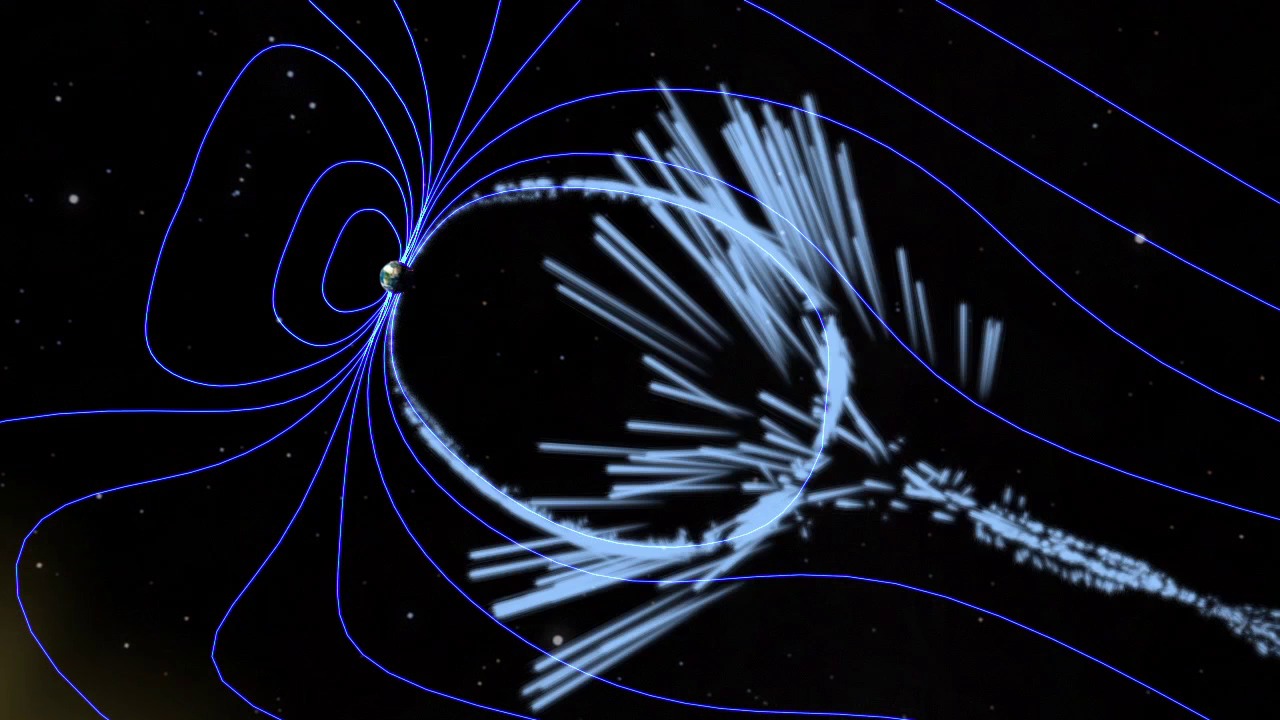一百年前,1919年5月29日,对日食的测量为爱因斯坦的广义相对论提供了证据。甚至在那之前,爱因斯坦就已经发展了狭义相对论,它彻底改变了我们理解光的方式。直到今天,它还为理解粒子如何在太空中运动提供指导——这是一个关键的研究领域,以确保航天器和宇航员免受辐射。
狭义相对论表明,光子,光子的粒子在真空中以每小时670,616,629英里的恒定速度运动——在那样的环境中,这个速度是非常难以达到的,也不可能超过的。然而,在整个太空中,从黑洞到我们的近地环境,粒子实际上正在以令人难以置信的速度加速,有些甚至达到了99.9%的光速。
科学家怀疑磁重联是粒子加速到接近光速的一种方式。这幅图描绘了地球周围的磁场,这些磁场会发生断裂和重新排列,导致带电粒子以高速被抛出。找出这种加速度发生的所有三种方式。
One hundred years ago, on May 29, 1919, measurements of a solar eclipse offered proof for Einstein’s theory of general relativity. Even before that, Einstein had developed the theory of special relativity, which revolutionized the way we understand light. To this day, it provides guidance on understanding how particles move through space — a key area of research to keep spacecraft and astronauts safe from radiation.
The theory of special relativity showed that particles of light, photons, travel through a vacuum at a constant pace of 670,616,629 miles per hour — a speed that’s immensely difficult to achieve and impossible to surpass in that environment. Yet all across space, from black holes to our near-Earth environment, particles are, in fact, being accelerated to incredible speeds, some even reaching 99.9% the speed of light.
Scientists suspect magnetic reconnection is one way that particles are accelerated to nearly light speed. This illustration depicts the magnetic fields around Earth, which snap and realign, causing charged particles to be flung away at high speeds. Find out all three ways that this acceleration happens.
Image Credit: NASA



